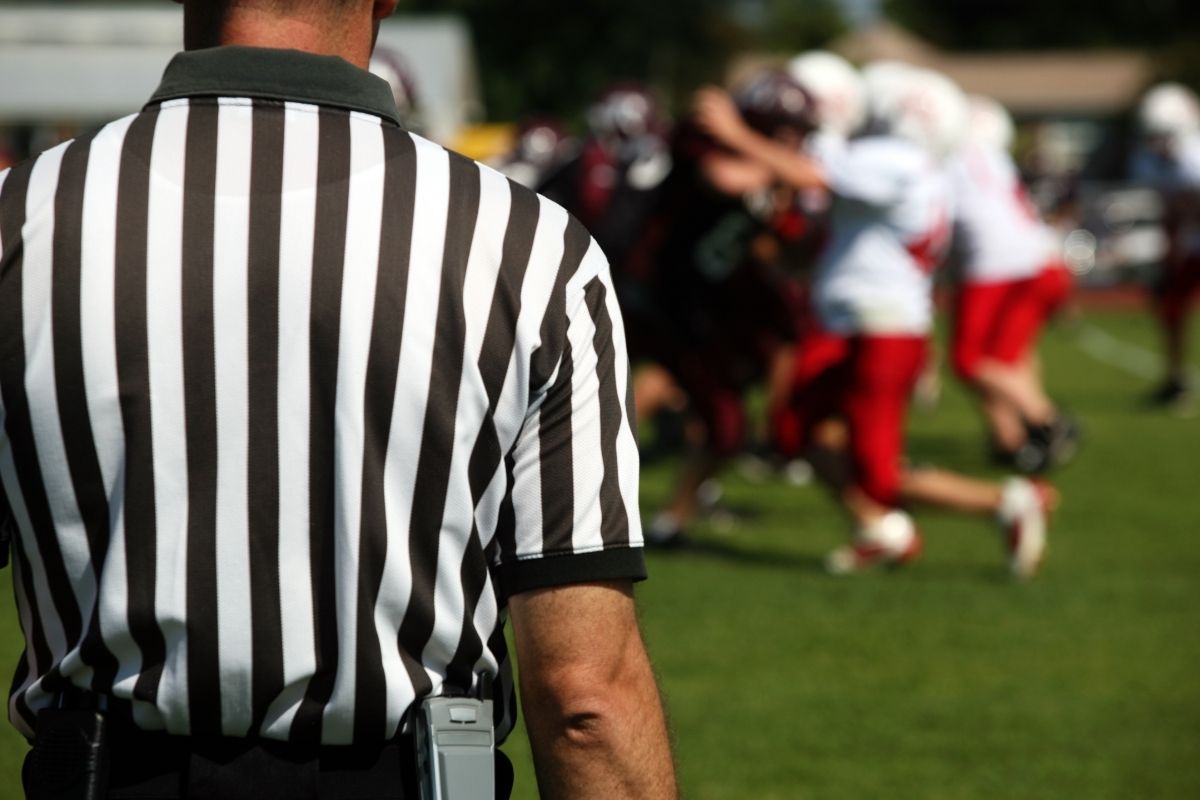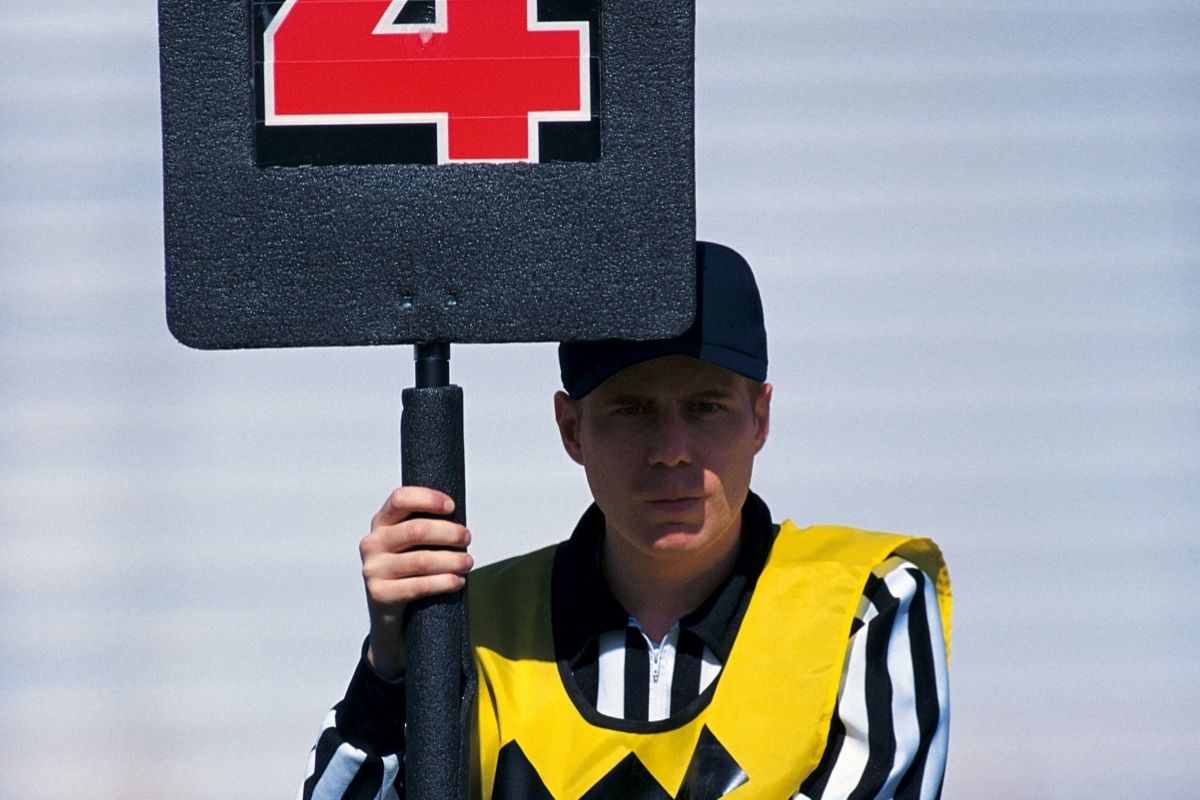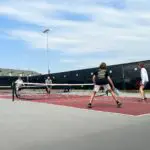When watching a game of football at any level you will notice that other than the players and the team’s management on the sidelines, there are quite a few football officials and you may be wondering what each one does.


Football officials are there to interpret and enforce the rules of football and ensure games run abiding by these rules.
With so many players on the pitch, there is a need for several different officials, all with their own unique responsibility.
In this guide, we look at the responsibilities of the seven different football officials you will find scattered across the pitch and the sidelines during a game.
Number One: The Referee
Referees are the head of the officials. In any ruling, the referee will have the final call, even if other officials do not agree with whatever this call may be.
Referees are usually positioned behind the line of scrimmage, approximately ten feet deep in the defensive backfield.
The uniform that a referee wears is slightly different from what the other officials wear as they wear a white cap and all the other officials wear a black cap.
The responsibilities of a referee include:
- Counting offensive players
- Observes quarterbacks during a pass play
- Observes a run back during a running play
- During kicking plays they observe the holder and kicker
- The referee is also responsible for making announcements during the game, such as announcing a penalty or any other clarifications
Number Two: The Umpire
The umpire works closely with the referee and will stand opposite the referee behind the scrimmage line.
The responsibilities of an umpire include:
- Counting offensive players to ensure the referee is correct
- Observes scrimmage lines for any illegal blocks, holding, or other penalties
- Checking for any possible illegal players downfield
- Keeping track of time outs and the game’s scoring
- Observing quarterbacks, particularly checking their passes beyond the scrimmage line
Number Three: The Down Judge
The down judge is also known as the Head Linesman. They position themselves on one specific side of the field alongside the line of scrimmage.
The responsibilities of a down judge include:
- Checking for any offside players or encroachments
- Calling out of bounds on their side of the pitch
- Marking forward progress of the ball
- Observes and tracks eligible receivers
- Is responsible for the position of the ball during the game and the chain crew
Number Four: The Line Judge


The line judge works closely with the down judge and positions themselves on the opposite side of the field from the down judge.
They have slightly less responsibility than the down judge but are expected to carry out similar responsibilities.
The responsibilities of a line judge include:
- Calling out of bounds on their side of the field
- Assists down judge with calls related to offside or encroachments and also help with scrimmage lines and false start calls
- In professional leagues, they are the timekeeper if something happens to the clock but in lower-level games, they are the official timekeeper for all games
Number Five: The Field Judge
You will see the field judge positioned on the sideline at the defensive backfield, usually 20 yards away from the scrimmage line.
They often stay on the same side of the field as the line judge.
The responsibilities of a field judge include:
- Counting the defensive players
- Calling any delays that happen in the game
- Ruling completed passes and interferences in a pass or holding downfield
Number Six: The Side Judge
The side judge works very closely with the field judge.
The responsibilities of a side judge are the exact same as the field judge with the only difference being that the side judge covers the opposite side of the field.
Number Seven: The Back Judge
The back judge is responsible for covering the area between the field and line judges and they tend to position themselves in the defensive backfield around the middle of the field.
They will be closer to whichever side the tight end is being played on.
The responsibilities of a back judge are similar to the field judge and include:
- Counting the defensive players
- Calling any delays that happen in the game
- Ruling completed passes and interferences in a pass or holding downfield
- Ruling whether goals are good
Equipment Used By Officials
Officials need a few things to carry out their duties. All officials will wear an official uniform which is a black and white striped shirt with white pants.
This makes the officials easy to identify for both the players and observers. Some officials will also have a whistle.
This is used to draw attention to themselves before making a call so that all of the officials will see what they are calling or highlighting.
A number of officials will also have a yellow flag.
This flag is used to highlight when a penalty should be awarded, If another action should be punished by awarding another penalty the official will throw their hat or a bean bag to highlight a second penalty.
Any official can throw in a flag. The bean bag is sometimes used to mark the spot where a punt has been caught or where a fumble has been recovered.
Officials also have signals that they use to communicate with both each other, the teams, and fans throughout a game.
When a flag is thrown by an official a hand signal will be used to explain why the flag has been thrown, as well as a verbal explanation.
Final Thoughts
The number of officials involved in a game will vary depending on the level of the teams.
For example, college football and the National Football League (NFL) use seven officials in their games but in high school football there are only five and there are even fewer again for youth leagues and middle school leagues.
We hope that this piece has answered any questions you may have had about football officials and that you now understand the importance each official’s role plays in a football game.
- Can You Play Pickleball on Grass? Tips and Tricks - June 12, 2023
- Do Pickleballs Wear Out? Everything You Need to Know - June 12, 2023
- Can You Play Pickleball on Concrete? A Guide to Playing on Hard Surfaces - June 12, 2023








